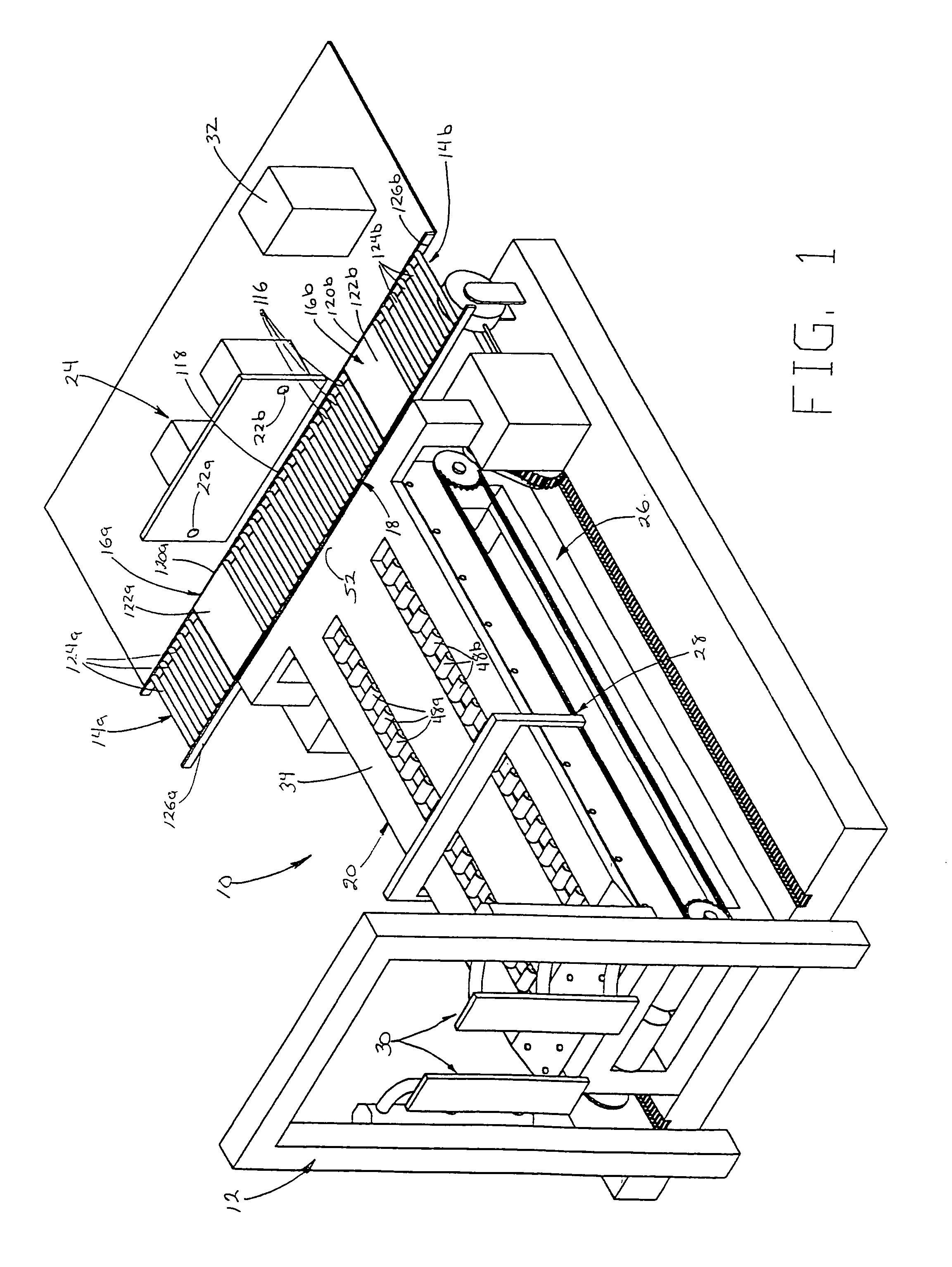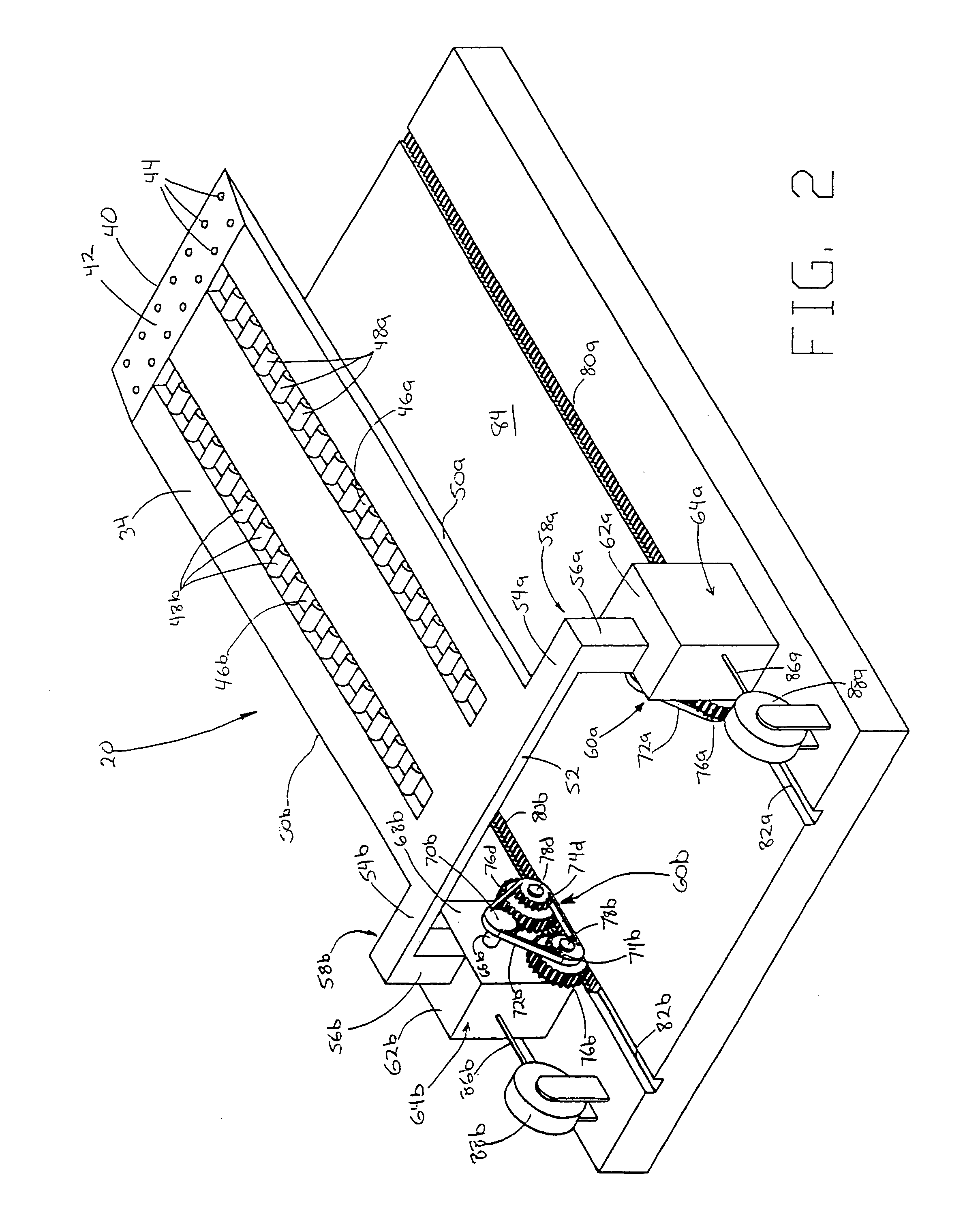Automated warehousing and cargo loading system
a cargo loading and warehousing technology, applied in the field of material handling systems, can solve the problems of increasing the quantity and cost of labor required to perform the shipping and receiving functions, increasing the cost of warehouse operations, and increasing the cost of direct labor costs, so as to reduce the cost of personnel and associated labor, the effect of reducing the operational cost of the warehouse and reducing the cost of the operation
- Summary
- Abstract
- Description
- Claims
- Application Information
AI Technical Summary
Benefits of technology
Problems solved by technology
Method used
Image
Examples
Embodiment Construction
a. Overview
[0051]FIG. 1 shows an automated cargo loading system 10 in accordance with the present invention, installed adjoining a truck docking bay door frame 12 in a typical warehouse facility. In the preferred embodiment, the invention comprises the following major elements which perform the following functions: The point of inventory (POI) conveyors 14a,b transport palletized goods between a source location, such as a storage unit or production line, and the feed control (FC) conveyors 16a,b. The feed control (FC) conveyors 16a,b provide controlled, sequential transfer of the palletized cargo between the POI conveyors 14a,b and the dock transfer (DT) conveyor 18. The dock transfer (DT) conveyor 18 moves palletized cargo from the FC conveyors 16a,b into alignment with the extensible dock 20 and serves as a staging platform for palletized loads being transferred to or from the extensible dock 20. The feed control sensors 22a,b, which operate in conjunction with the FC conveyors 16...
PUM
 Login to View More
Login to View More Abstract
Description
Claims
Application Information
 Login to View More
Login to View More - R&D
- Intellectual Property
- Life Sciences
- Materials
- Tech Scout
- Unparalleled Data Quality
- Higher Quality Content
- 60% Fewer Hallucinations
Browse by: Latest US Patents, China's latest patents, Technical Efficacy Thesaurus, Application Domain, Technology Topic, Popular Technical Reports.
© 2025 PatSnap. All rights reserved.Legal|Privacy policy|Modern Slavery Act Transparency Statement|Sitemap|About US| Contact US: help@patsnap.com



